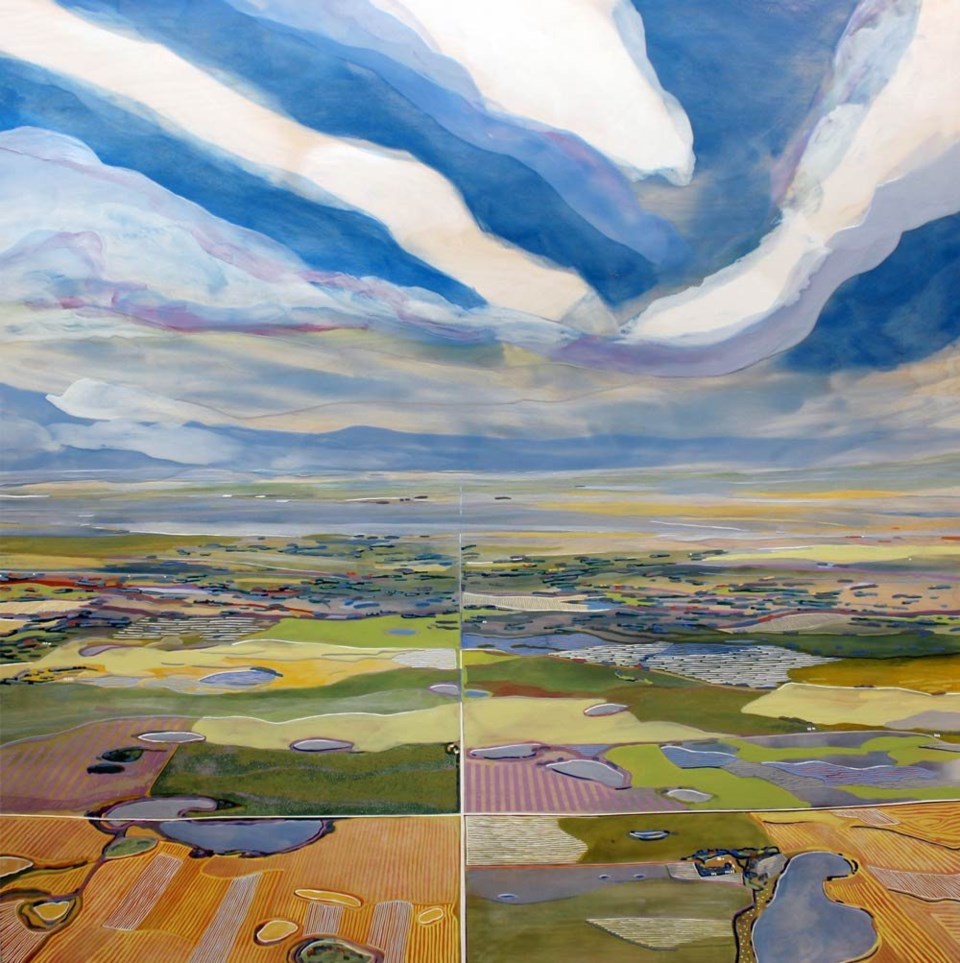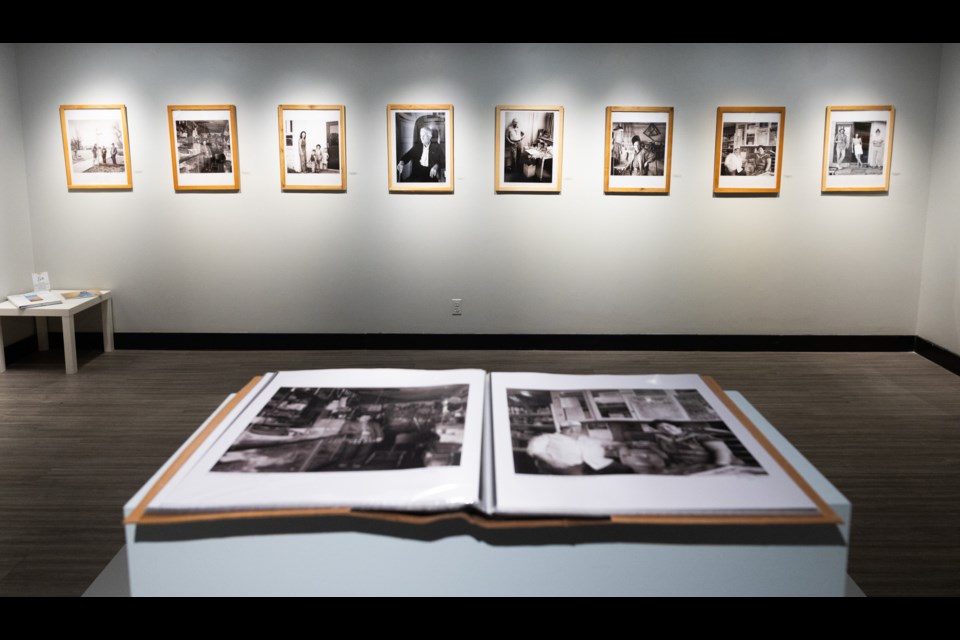Two artists' love for the prairies is on full display at the Okotoks Art Gallery.
The works of prolific photographer Harry Palmer (1930-2020) are on display in an exhibition titled A Portrait of Canada.
The Calgary-born photographer traveled Canada, specifically the prairies, for decades as an engineer for petroleum companies before leaving his profession to become a full-time documentary photographer in 1984.
His son Bruce, who attended the opening of the exhibition on April 30, said his father had a deep love for the prairies, and the people who resided in it.
“He also appreciated that what he was seeing would not exist for much longer, things were changing quickly,” Bruce said. “One of the portfolios he did was called Sentinels of the Prairies, of the grain elevators, but it wasn’t just the elevator itself, it was a symbol for the community around it, the people who work in them and around in the farming communities, grocery stores, all that."
Palmer’s wife, Joyce, recalled the love he demonstrated for the people living across Canada.
"He loved the landscape, he also loved photographing people,” Joyce said. “There’s lots of wonderful stories behind the photographs.
“He loved what he did, he loved Canada — he was across the country umpteen times. He just loved photographing what was here."
Through his travels, Bruce said his father forged strong relationships with Indigenous peoples across Canada, often being invited to observe and sometimes partake in ceremonies and other activities.
“He was invited to the Piikani first nations, among others, not only to photograph but to participate and watch ceremonies,” Bruce said. “Many of those things he was invited to see were never photographed, but to learn about their culture.”
The proceeds from the sale of prints involving Indigenous people, Bruce added, will be given to the Glenbow Museum's Indigenous Arts and Culture program.

For another perspective on prairies, Saskatchewan-born Heather Cline created a body of work titled Shifting Grid from both aerial and terrestrial perspectives.
Through various travels and residences where the career artist embedded herself into the fabric of Canadian agriculture, through which she offers both a study of how humanity affects the land and the emotions invoked experiencing it.
“I’m a Saskatchewan girl, so I was city raised, but I have two parents who were raised on the farm, and I grew up on stories of the farm and visiting relatives on different kinds of farms,” Cline said.
“I do have a bit of a romantic view, but I did a big project where I went across Canada interviewing people and had them tell me about places, and then I painted them in response.”
Part of that project involved embedding herself in a farming community, where she rode along in combines and talked to people about cattle breeding.
“My practice has to be more than just the act of painting,” Cline said. “I need to feed my practice with ideas, and for me that has mostly come from my interaction with people, and I have a real interest in human geography and how we affect the landscape.”
The Canadian prairies are a prime example, Cline said, where cultivated lands are intertwined with natural areas.
“And then you have these pockets where people have left certain areas intact,” she said. “It's really interesting when you look at all the different approaches we’ve had to land in the last 100 years.”
Through the aerial scenes, the intermingling of natural grasslands and Woodlands with the geometric footprint of crop fields can be observed in her almost ethereal painting style.
“I’m a frustrated oil painter,” Cline jokes. “I’m violently allergic to oil paint, so I spend my whole time as an acrylic painter trying to replicate the lushness of oil.”
To that end she mixes various mediums with her acrylic paint, as well as using more traditional oil techniques, along with abstract acrylic technique.
“So it kind of gives me this big vocabulary of technique to make the paintings seem, I hope, very alive,” Cline said.
The exhibitions are on display from April 30 to June 24. For more information visit Okotoks.ca




